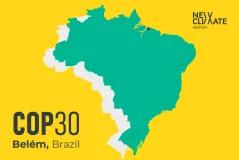US President Trump’s Executive Order on “Promoting Energy Independence and Economic Growth” sets the US on a path to miss its Paris Agreement commitment for 2025 by a large margin, the Climate Action Tracker said today, adding that it would warrant moving the US from a “medium” to an “insufficient” CAT rating.
If the Executive Order were carried out in full, US emissions in 2025 and 2030 are expected to be roughly similar to today, instead of the 13% decrease from 2014 levels needed to meet its target (Nationally Determined Contribution) submitted to the Paris Agreement.
In 2016 the CAT rated the US’s NDC as “Medium”—i.e. not yet consistent with limiting global warming to 2°C, let alone 1.5°C, unless other governments make much deeper reductions.
President Trump’s Executive Order, if codified as an NDC under the Paris Agreement, would move the US down to a CAT rating of “inadequate”—a level of action that, if followed by all other countries, would put the world on a pathway consistent with a 4 degree C global average warming. See full briefing here.
“It is almost certain that as a consequence of President Trump’s Executive Order this week, the USA will miss its 2025 NDC target—not that it would fully reverse existing trends on renewables or efficient cars, but because it will prevent new policies in other areas planned by the Obama administration from being implemented,” said Prof. Niklas Höhne, of New Climate Institute.
“If all other countries were to follow the United States in lowering the level of ambition and rolling back action on climate change, the world would warm by around four degrees over this century, a warming rate and level not seen on the planet for 55 million years,” said Bill Hare, CEO of Climate Analytics.
However, President Trump’s Executive Order can slow - but not reverse - the trends that have driven down US emissions in recent years. Although it begins the process of “suspending, revising, and rescinding” currently implemented policies, these steps are likely to be followed by legal disputes over the coming years and therefore will have a delayed impact on US emissions.
“Unstoppable market pressures like the low and declining cost of renewables and battery storage, and action at state and local levels—such as California’s determination to enact stronger vehicle fuel efficiency standards—will continue to drive the development that decreases greenhouse gas emissions,” said Yvonne Deng of Ecofys, a Navigant company.
Momentum on climate action continues at state and city level. Until mid-2013, a Federal climate policy was not expected in the US, and states and localities took the lead on implementing emission- reducing policies.
Read the full briefing here.






